Pattern Cutting Master Shingo Sato
Deutsch
The value of pattern cutting has been rediscovered. Worldwide, a new trend revives the art of pattern design. Fashion Schools in the United States, Canada, Japan, Australia, Italy and England have expanded their programme with presentations by visiting professors. The new generation of creative minds favours pattern cutting over the design. The design arises from the process of pattern making. In this article, we report on the latest influences in the area of pattern design.
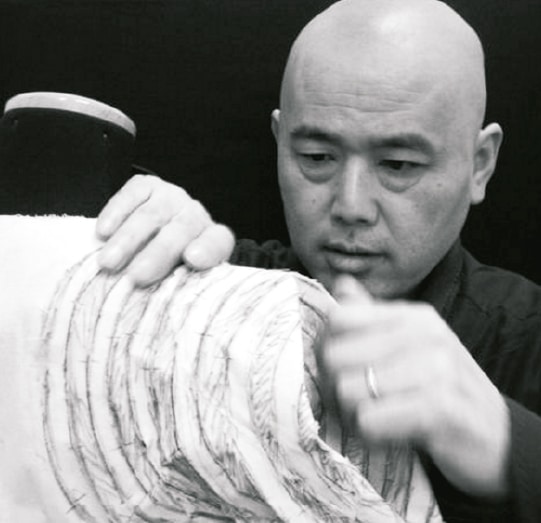
Shingo Sato, innovative pattern maker and designer is one of the leading figures of a new movement in the fashion industry. Shingo Sato’s “Transformational Reconstruction Technique” is a combination of flat patternmaking techniques and three-dimensional draping techniques at the dress form. The pattern maker becomes the designer with intuitive, artistic and innovative methods. The main objective is to dismantle boundaries and rebuild without limitations.
You can find the full article in our magazine Rundschau for women 2.2012.
Origami-Dress
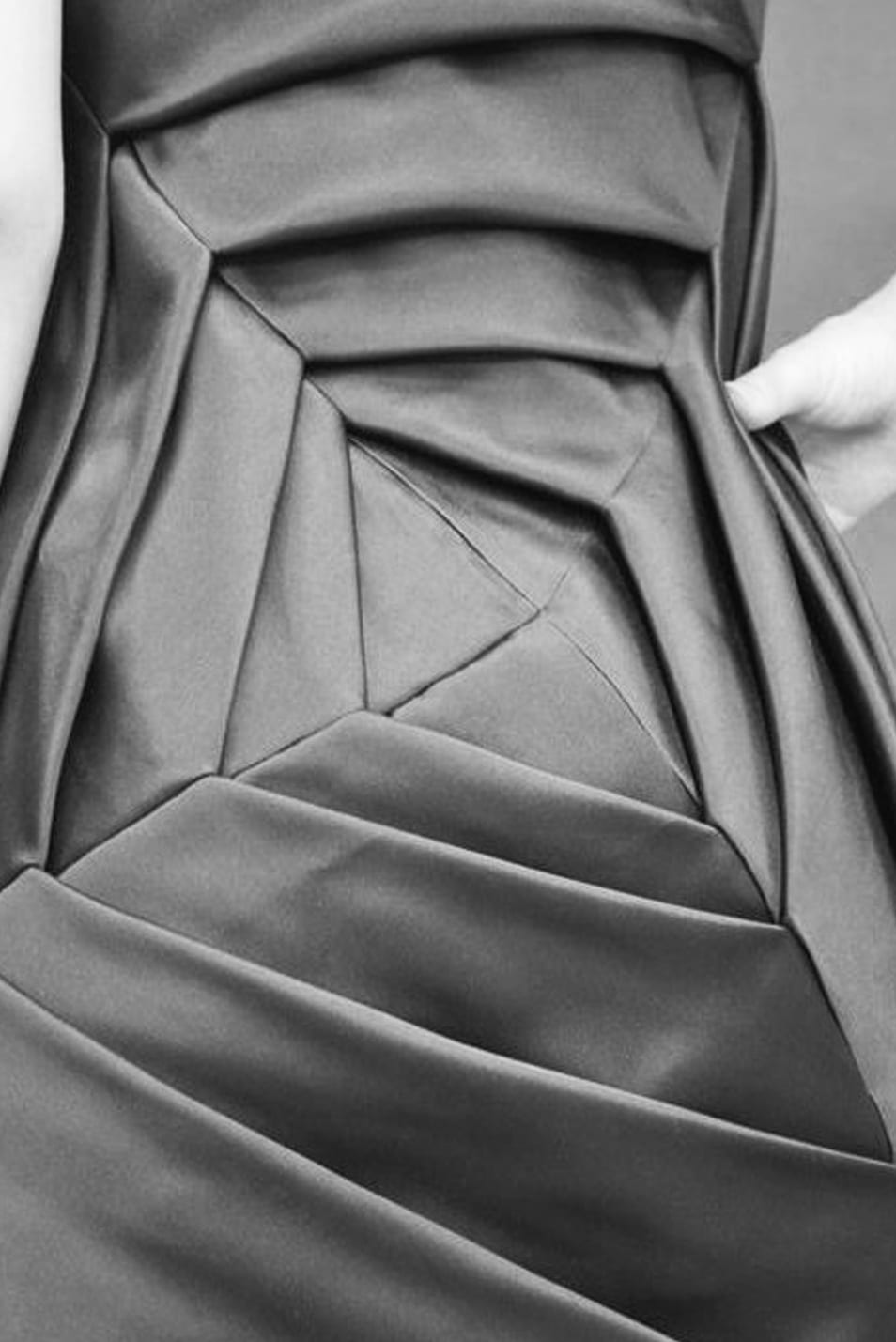
This technique enables experts as well as amateurs to perform creative studies and experiments with pattern cutting and design. Shingo Sato combines the complexity of origami, haute couture, flat pattern design, and draping in his designs with unusually elegant seaming that let the materials flow around the body.
Futuristic shapes, optical illusions and mindbending fabric transitions are his trademark. He shapes his designs with traditional twodimensional pattern techniques to achieve threedimensional effects, often cut in waves, Stripes and other geometric patterns of fabric and colour. The finished garment seems a mystery, as no means of assembly are visible. Shaping seamlines such as sideseams, armholes and darts are replaced with flowing transitions. Among his most famous designs are the Ribbon skirt, the origami dress and the accordion collar.
Wave Jacket
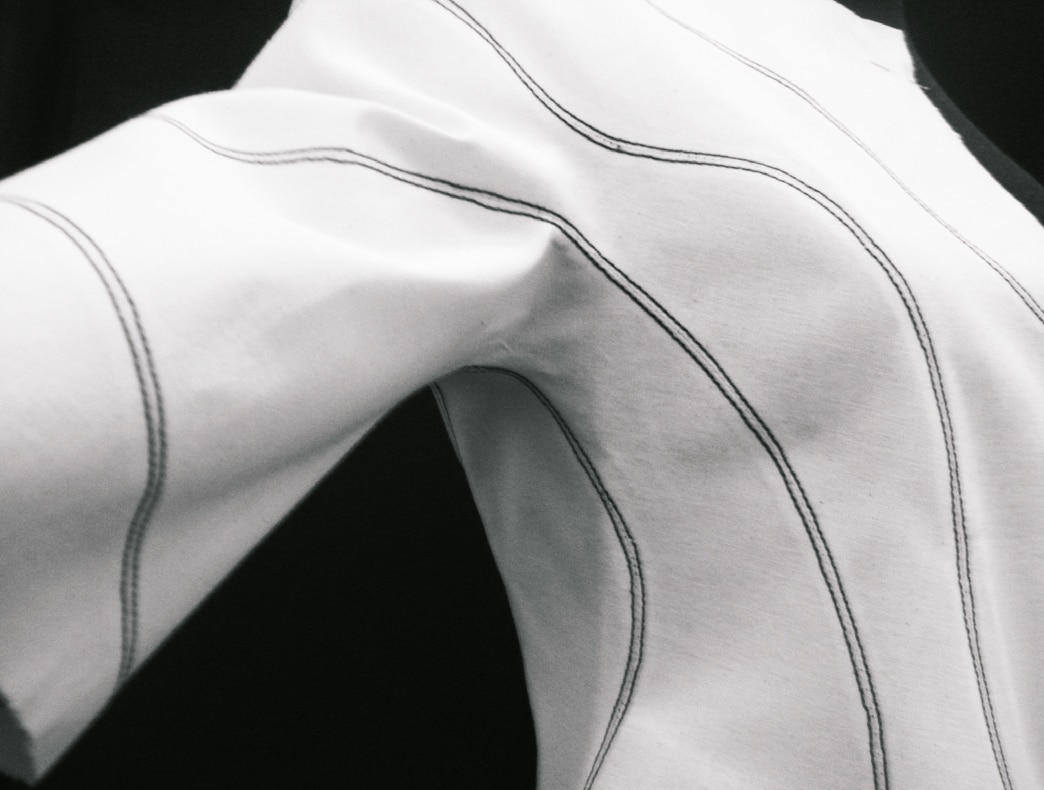
Shingo Sato starts with the muslin shell of the silhouette and adds fullness, decorative details, geometric constructions and stylelines as he works directly on the dress form. He learned this process in Paris, when he began his design Career at Azzedine Alaia.
Design on the Muslin Shell
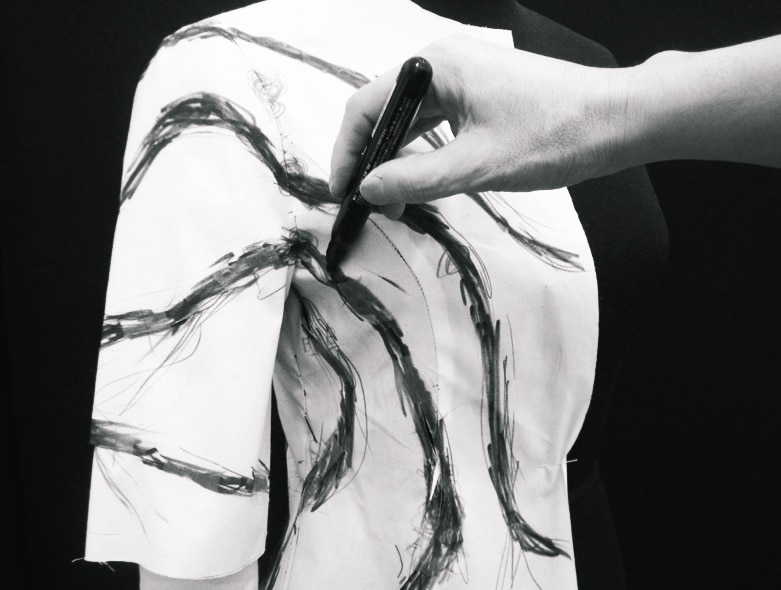
Drawing the stylelines in freeform directly on the muslin sloper is a very creative process but also at the same time an elaborate implementation of important patternmaking basics. The wave jacket design shows how the seamlines at the armhole can be broken up and converted, so that at the end of the design process, no real armhole is visible.
First mark critical points on the transition between the bodice and the sleeves. The direction of the sleeve cap line changes at the front and back armhole notch. It is a good idea to draw the wavy stylelines over these points so that later the individual sections of the waves lie flat and can be cut out more accurately.
Separate the Pattern Pieces
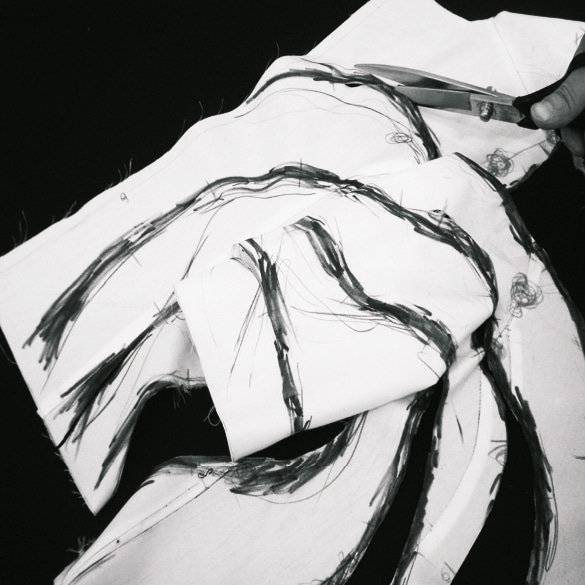
Take the muslin shell off the dress form after generously drawing the stylelines on it and cut out the wavy pieces. It is very important to mark matching notches because the seamlines are very confusing. Add more notches in curves or on important transitions as on straight lines.
Cutting the Second Muslin
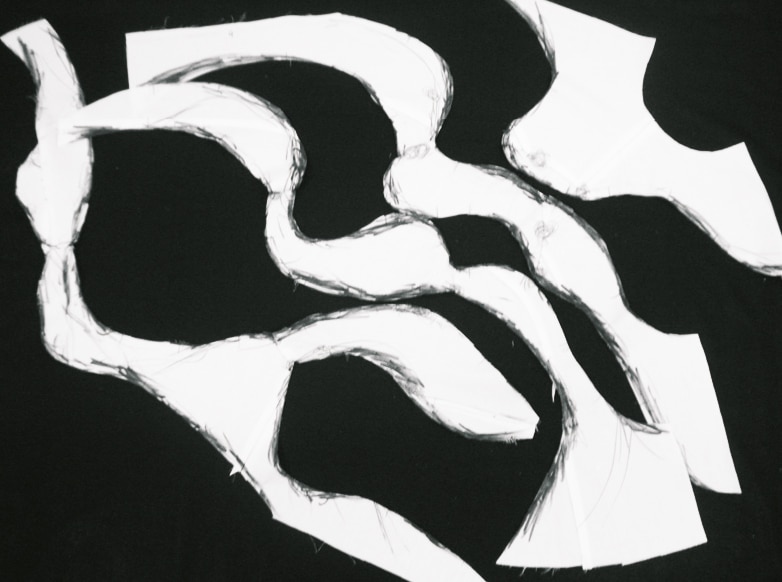
Press the individual wavy sections and pin the pieces on the new muslin. Cut the pattern pieces with seam allowances for the next fitting. Notch the seam allowances and take off the original pieces.
Muslin Jacket
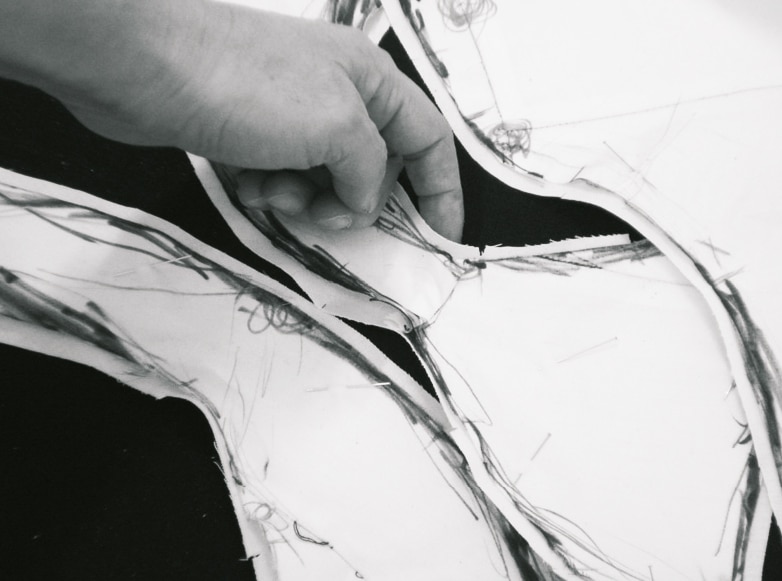
Sew the wavy sections together with matching notches and topstitch the seams to make the seaming more visible. You can also tailor the sample jacket of contrast material to make the design particularly stand out. The wave jacket shows a fall
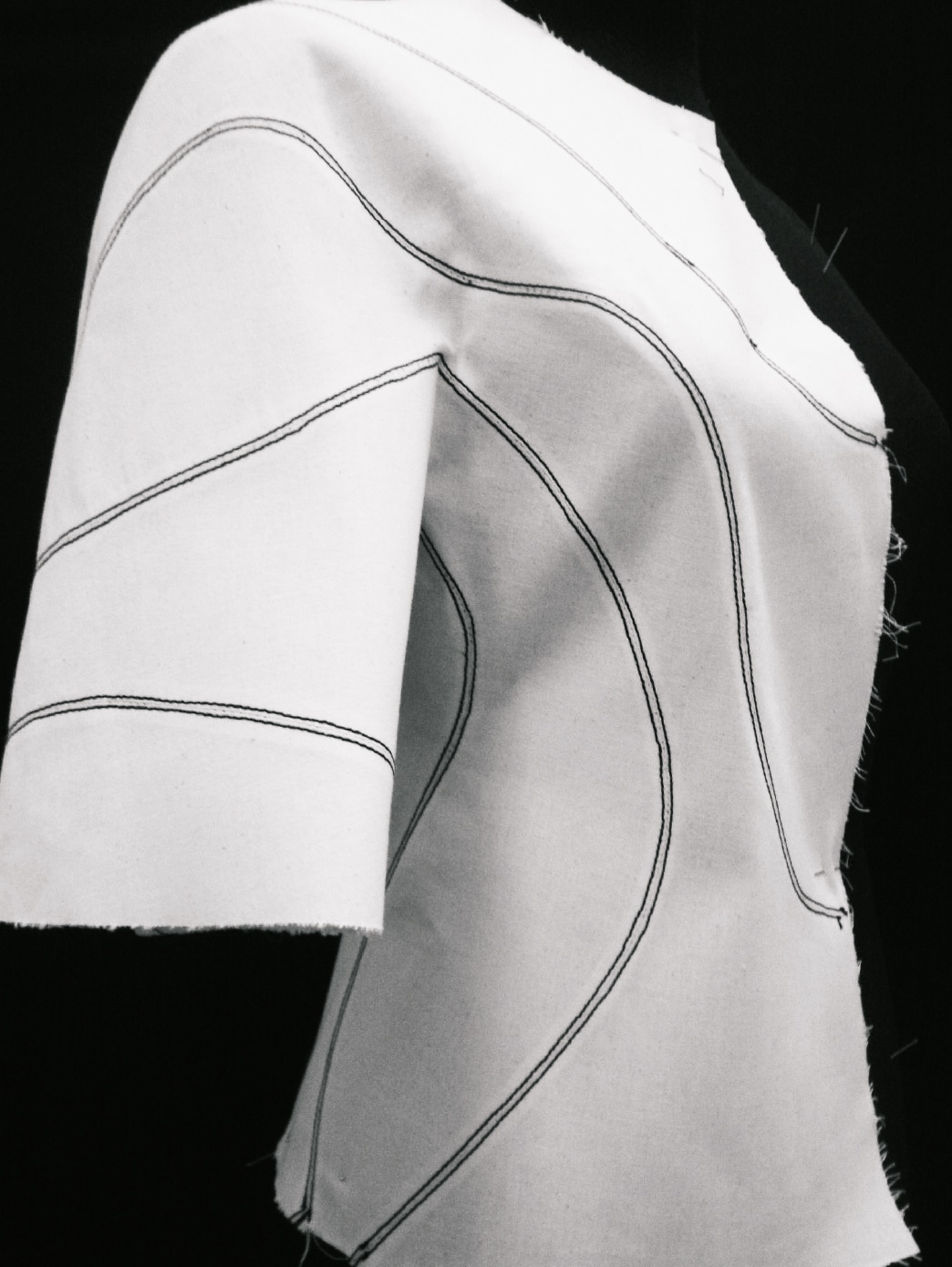
The wave jacket shows a fall of the sleeve which is usually only found in a set-in sleeve. Although no armhole is visible and the boundaries between bodice and sleeves have been obliterated, the fit of the basic block is retained.
Geometric Constructions Origami Technique
Shingo Sato’s draping techniques can be implemented for flat patternmaking and even for computer aided patternmaking. The Origami folding method is an excellent example for creating geometric constructions.
Design
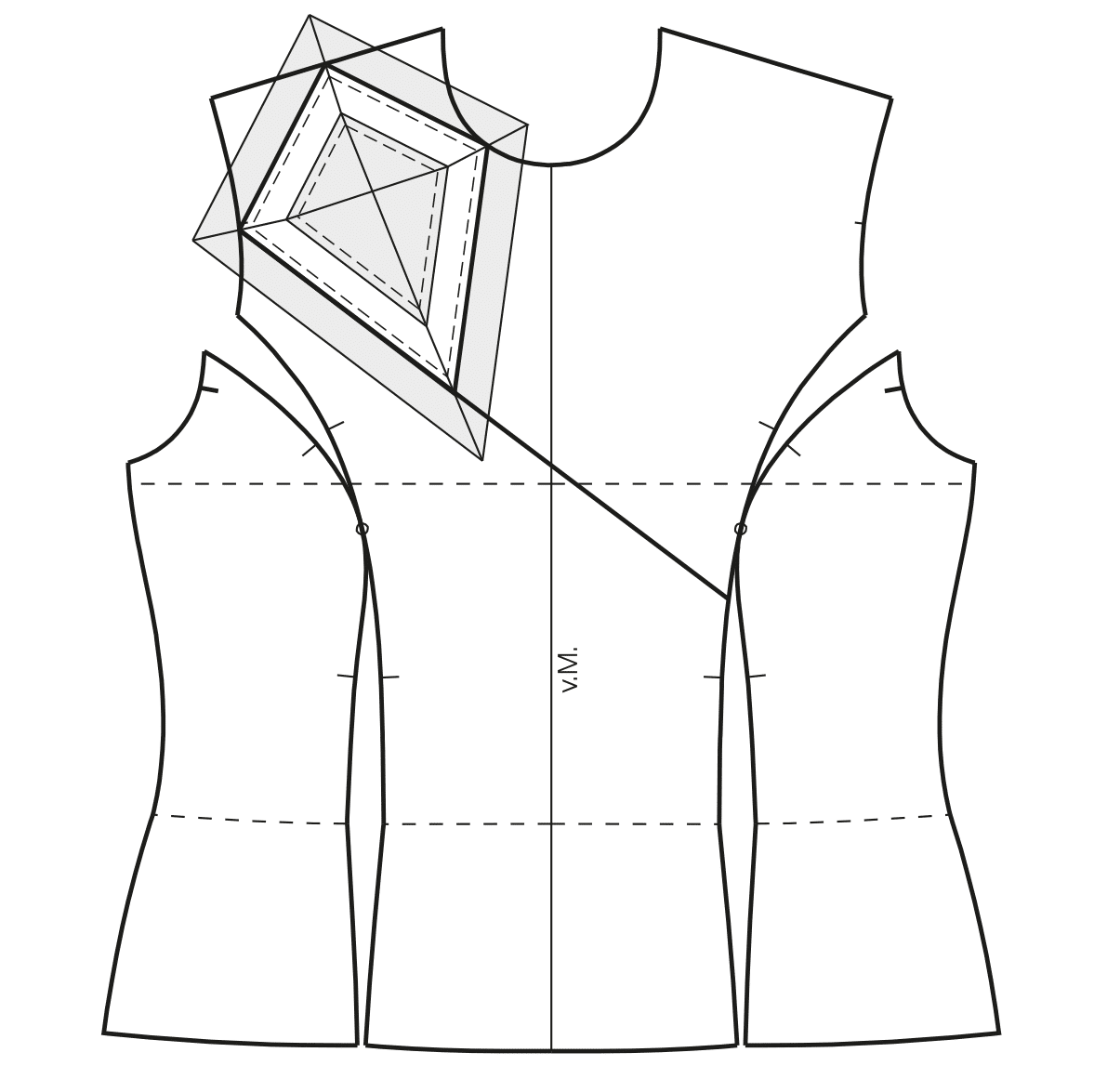
Finished Pattern Pieces
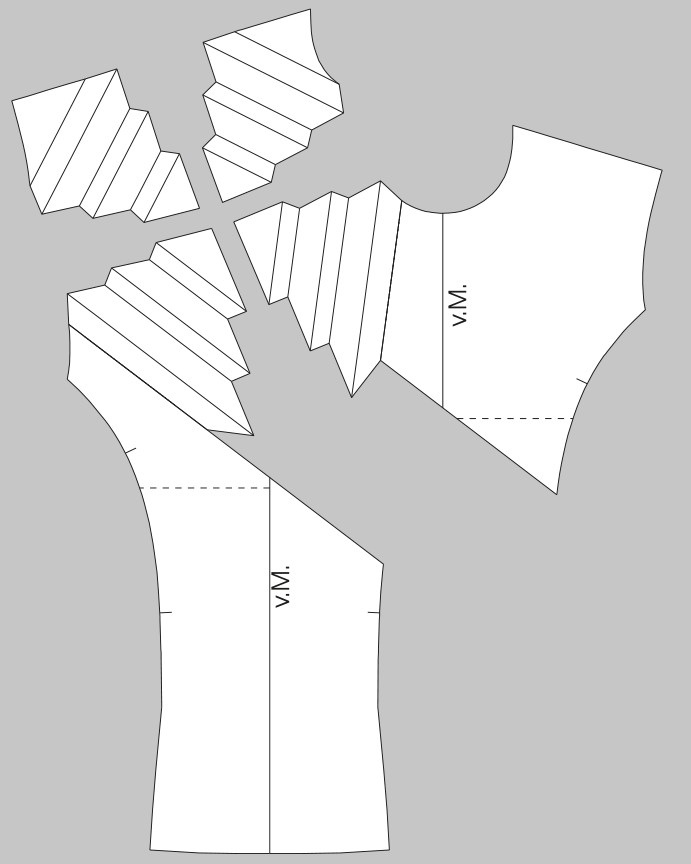
Accordion Collar
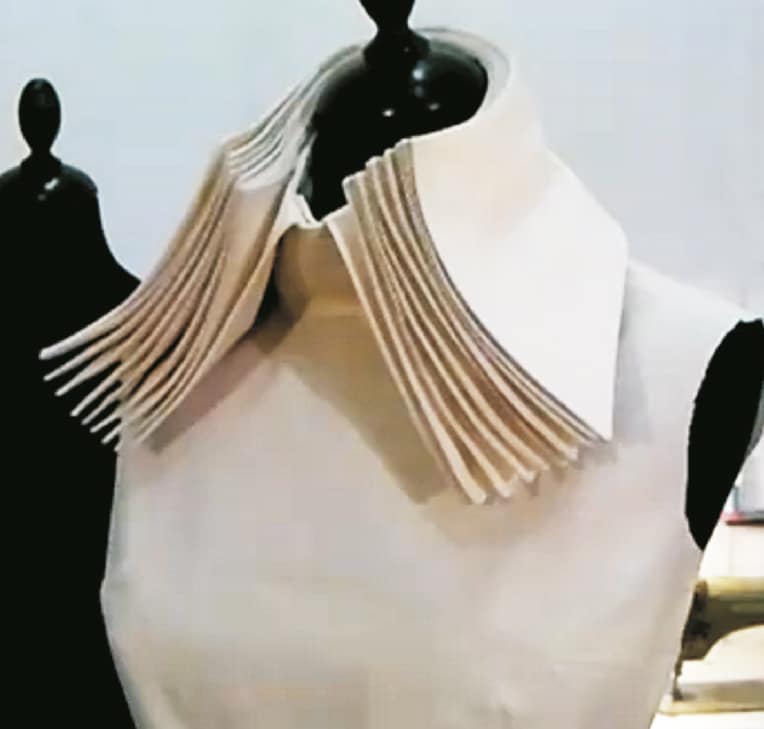
The accordion collar is another example of the Japanese art of Origami, applied to pattern design for clothing. Not only do the many layers of the accordion collar resemble a Victorian collar, but they have another particularly refined effect. The accordion collar itself, as the name implies, can be pulled over the head and worn as a hood.
Finished Pattern Pieces
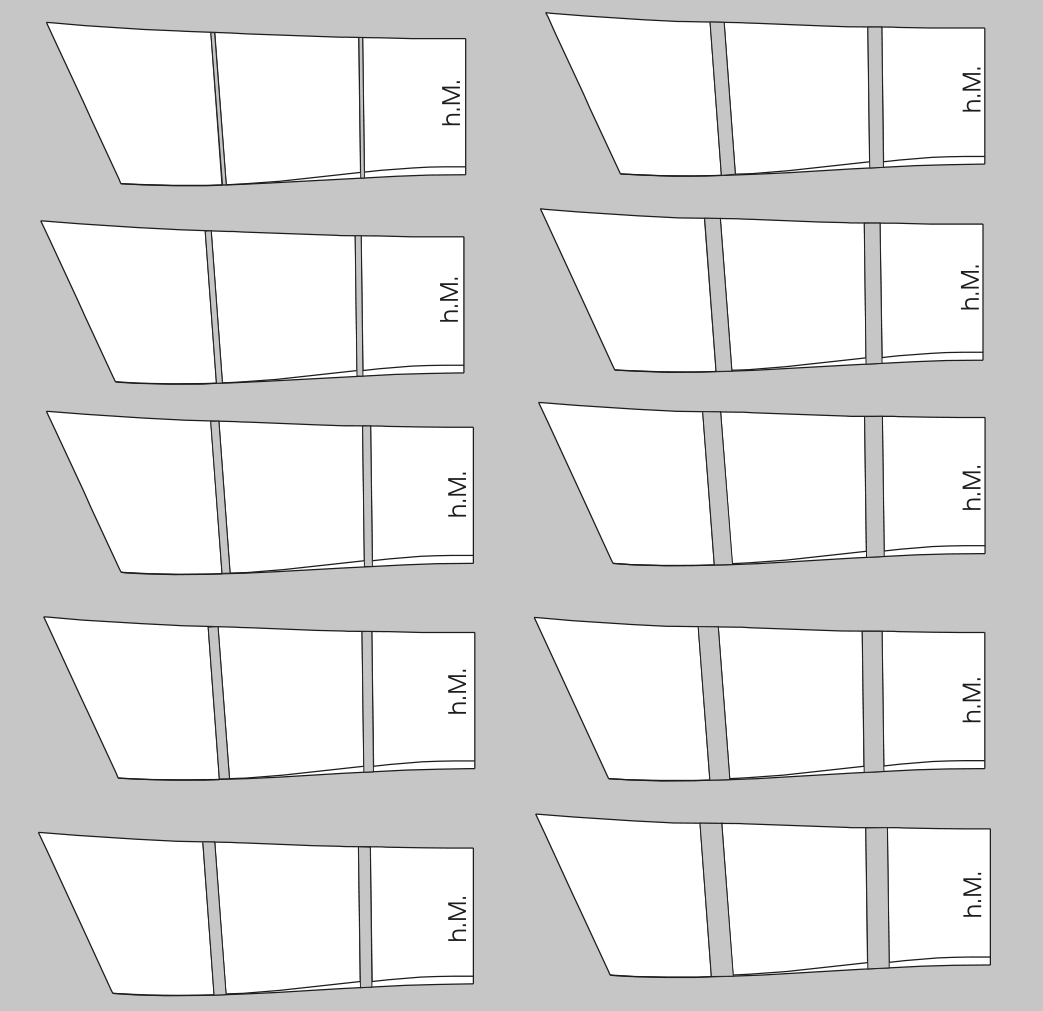
Copy the collar and raise the collar slightly at the centre back. Blend the seamline and trace 8 to 10 copies of the collar pattern depending on material and preference. Slash and spread the collar pattern twice and repeat this for every layer. Spread each layer a bit more for enough roll width at the outside.
Sew the collar pieces together alternately at the outer and the inner edge for the accordion effect. The inside layers can also be cut smaller than the outside layer which affects the depth of the accordion fold. Adjust the depth of the accordion fold depending on material and preference.
Geometric Constructions Balloon Technique
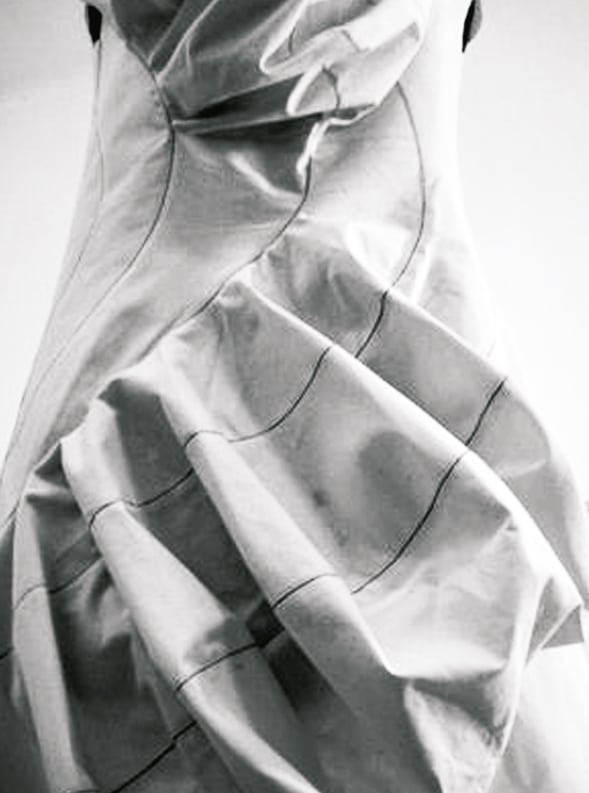
Another three dimensional effect can be achieved with the balloon technique. Here, the silhouette of the design is broken up by additional fullness. The balloon insets seem to grow out of the garment without any visible ruffles at the seams.
Finished Pattern Pieces
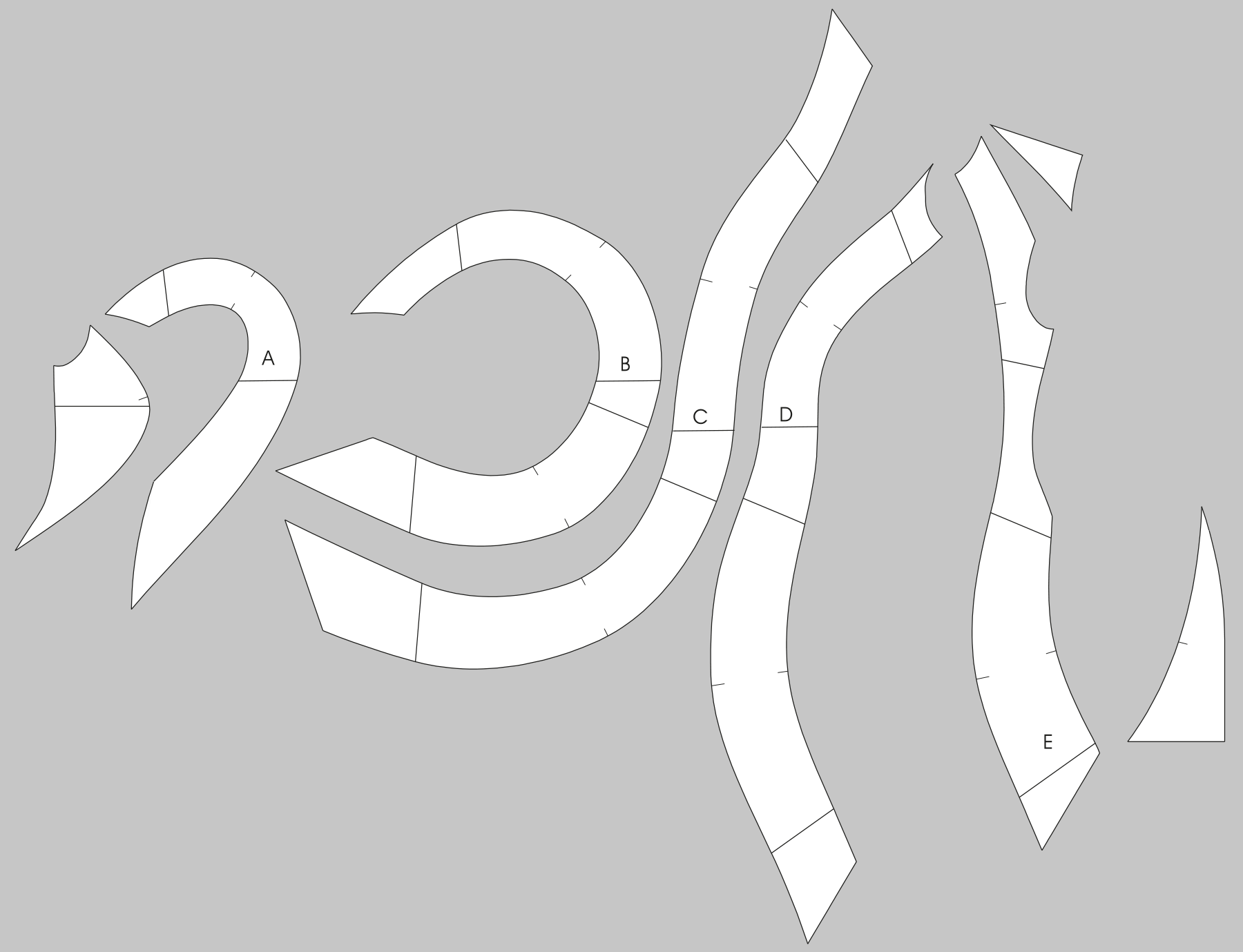
Copy all pattern pieces. Prepare each strip as shown in the figures 6 and 7 and replace the grey areas with the extended pieces of the balloon. Close the side darts and blend all seamlines. Mark the matching notches.


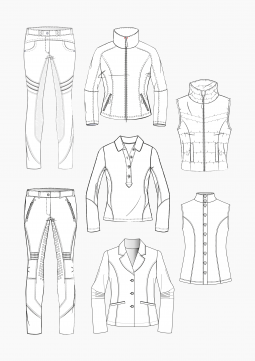
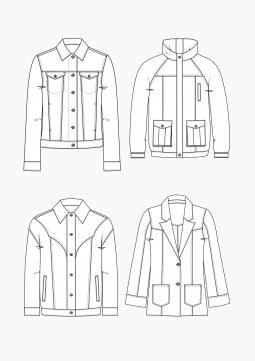
Hello, I was just wondering if you know of a company email address that I could use to contact Shingo Sato. I am an A-Level student from the UK and I am trying to reach out and contact him as he is my allocated artist. If not then that is not a problem.
Many Thanks,
Abbie Randles
Dear Abbie Randles, please check out the page of TR Cutting School by Shingo Sato.
Hello, would like to be part of his class, but don’t know how to go about it, will appreciate if i can get his email. Thank you
Dear Taiwo, please contact TR Cutting School for a Shingo Sato class: https://www.facebook.com/trcuttingschool/
Hai good evening. Its veena from India. I would like to learn t r cutting techniques with shingoSato in Japan. Could you send me d details?
Dear Veena, please contact TR Cutting School for a Shingo Sato class: https://www.facebook.com/trcuttingschool/
I am trying to purchase copies of Shingo Sato’s books “transformational Reconstruction” and “Transformational Reconstruction 2”. Please let me know who I can contact in order to purchase.
Thank you!
Hello Mona Wuertz,
we don#t sell this books. Please contact TR Cutting School for it.
Good evening, how can I attend your class online?
Dear Courtney Robertson, please contact TR Cutting School for a Shingo Sato class: https://www.facebook.com/trcuttingschool/